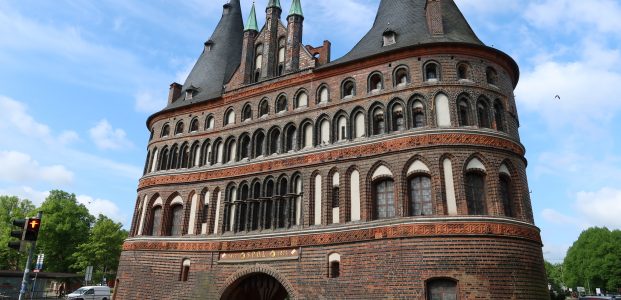With a couple of days to spare, we decided to explore Travemünde and Lübeck. Travemünde is probably best known as ferry port these days and it is busy with ferries coming in and out constantly. However, it is also a German seaside resort with a lovely beach at the mouth of the river. The river is called the Trave (hence Travemünde is the mouth of the Trave) and it has been a beach resort since 1802, so sand is something of a theme in the town. So much so that the first thing we went to was an exhibition of sand sculptures. This is an exhibition which is on for 2022 in an old warehouse just round the corner from the marina. We really didn’t know what to expect, but it was actually fascinating. The sand used for these kind of sculptures apparently tends to come from fluvial deposits rather than from beaches. The sand on beaches has grains which are quite rounded because of the action of the wind and the tide. Sand from rivers will tend to have more angular grains along with a small fraction of silt and clay and this helps it all bond together better. To make the sculptures the sand is compacted in a wooden frame to make it sufficiently solid, but that is all. No moulds or formers are used – the sand is simply sculpted into shapes using hand tools and the shapes they manage to achieve are amazing. The exhibition took us around the world in sand …..
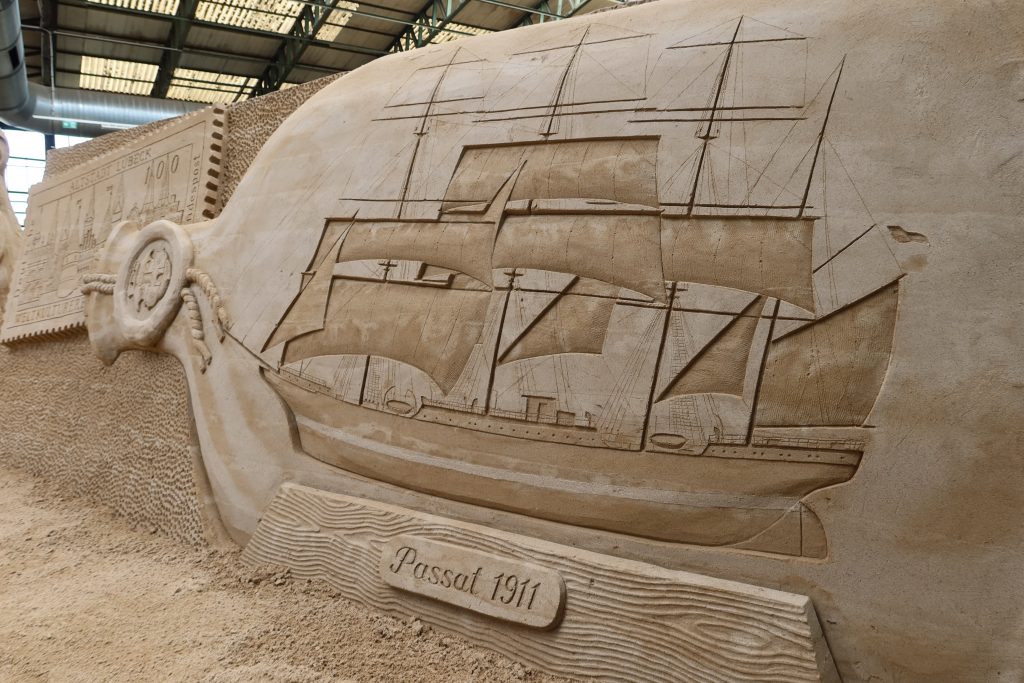
The topicality of the exhibition meant that the state of the world was even reflected in a sand sculpture of the Ukrainian soldier giving a Russian ship the finger. This is an image that has even been turned into a stamp by the Ukrainians.
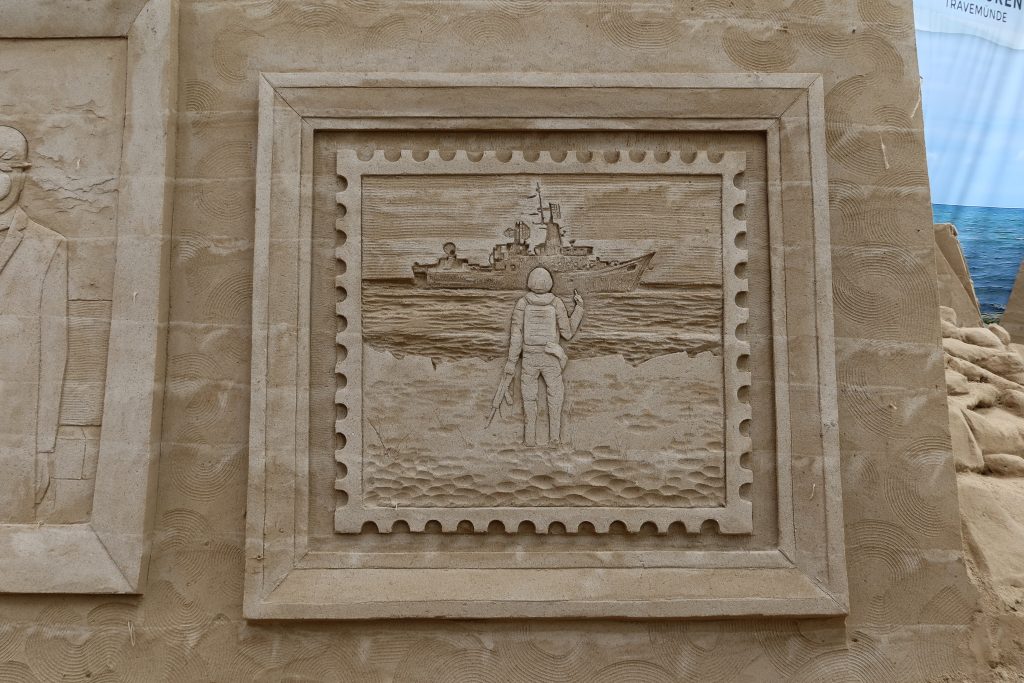
Most countries had their own sculptures, but Australia was one we particularly focused in on. A koala, a duck-billed platypus, an echidna and a didgeridoo in sand made for a very striking, if slightly stereotypical, image.
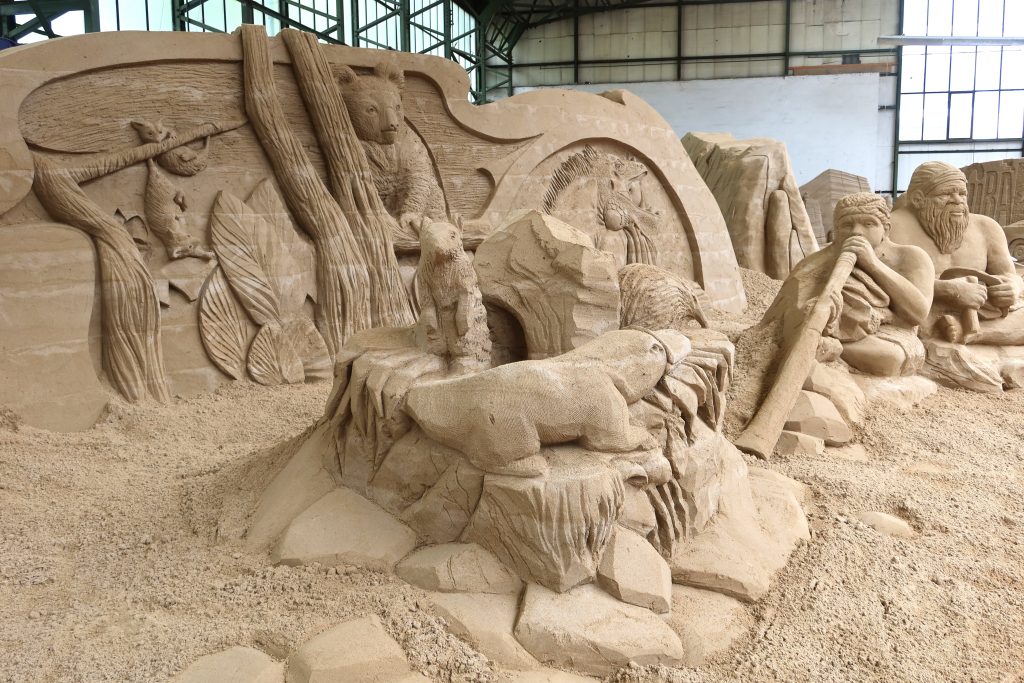
From there we crossed the ferry to the eastern side of the river. This is quite symbolic as during the Cold War, the river Trave was the border between East and West Germany and so was closely guarded. However, now various building developments make this side as western as it could be. We crossed to visit the Passat which is moored as a museum ship on the eastern side of the river. The ship itself is striking – a four-masted barque. She is apparently a barque because she carries fore and aft sails on the mizzen mast. If all four masts carried square sails, then she would be a fully-rigged four-masted ship. She has an interesting history but spent much time in the ownership of Gustav Erikson – a ship-owner from Mariehamn in the Åland islands. He operated her from 1932-1950 and to make his ships profitable on the dwindling grain trade (steam ships were becoming much more competitive) he drove costs right down. The ships were operated by just 28 men – something which when you stand on deck looking at the scale of the ship seems to be in the realms of fantasy. These 28 men would regularly sail voyages of 30,000 miles generally carrying grain from South Australia or, in the case of the Passat, nitrate from South America. Eric Newby wrote of the windjammers in his book – The Last Grain Race – and he said that Erikson was both respected and reviled by the crew, who knew him only as “Ploddy Gustav”. Thirteen ships took part in the 1939 grain race (the Passat amongst them) and 10 of them were Erikson ships.
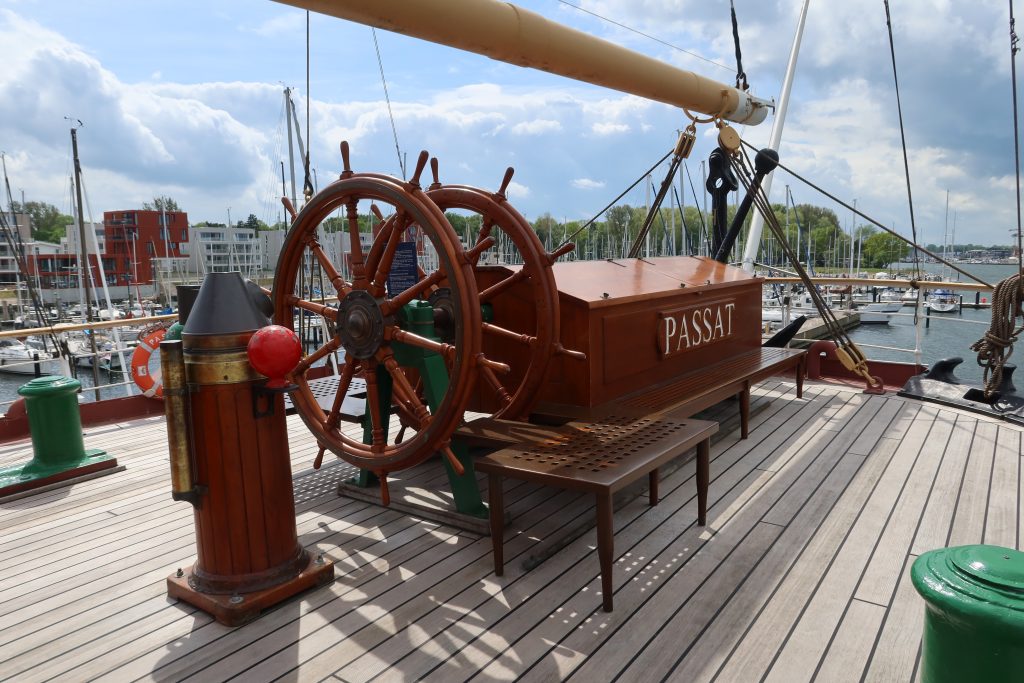
The next day we got on the train down to Lübeck. It is officially known as the Hanseatic City of Lübeck (hence the car number plates starting with HL)and with around 220,000 inhabitants it is the second-largest city on the German Baltic coast and in the state of Schleswig-Holstein. It is probably most famous for being the founding city of the Hanseatic League and its de facto capital. The skyline is dominated by the towers of its five main churches – all of which are impressive in scale. The cathedral, finished around 1230, was the first large brickwork church in the Baltic region. Coming from the station, the first major landmark is what is probably the best known symbol of Lübeck – the Holsten Gate. This was built in 1464 and is one of the relics of the medieval city fortifications.
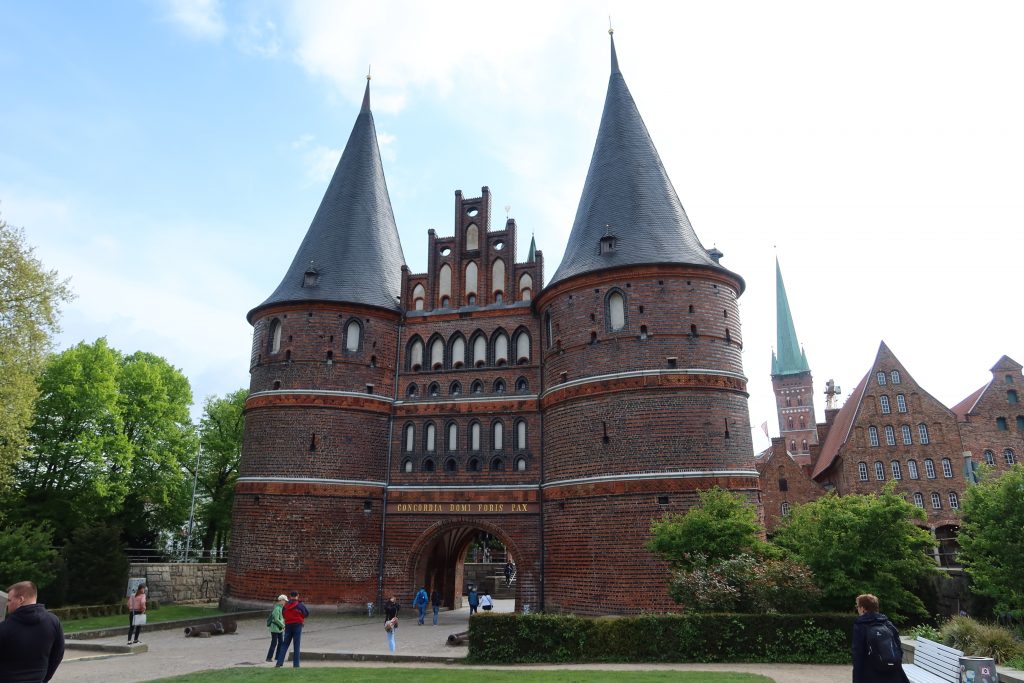
All this history is impressive (in fact it is Germany’s most extensive UNESCO World Heritage site), but far more important is the fact that Lübeck is the home of Lübeck Marzipan. This is of a higher quality than conventional marzipan – something which is regulated by the German Institute for Quality Assurance and Classification. For a product to qualify as Lübeck Marzipan (a name protected by an EU Council Directive), a product must contain no more than 30% sugar, while Lübeck Fine Marzipan must contain up to 10% sugar. We went to the Niederegger cafe – they are one of the main Lübeck Marzipan manufacturers – and had a very nice strawberry torte. We did buy some souvenir marzipan though!
The rest of the day we spent following a walking route round the various attractions of Lübeck – a beautiful city.

